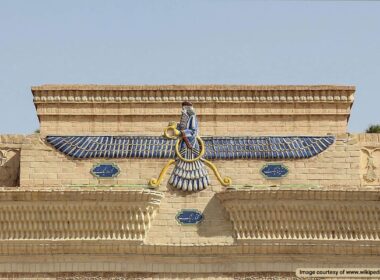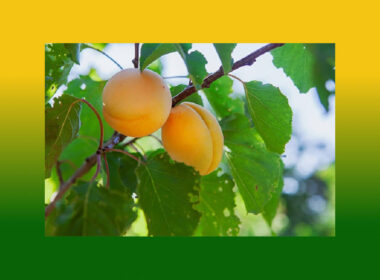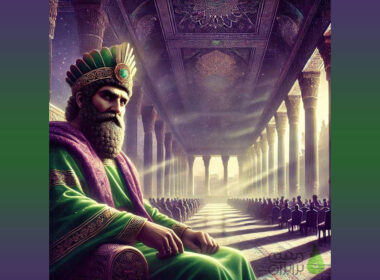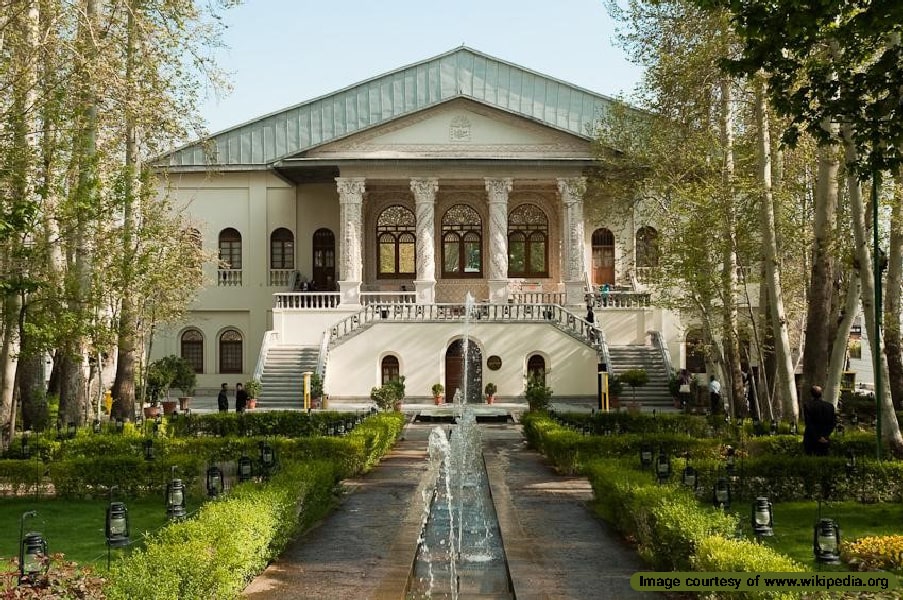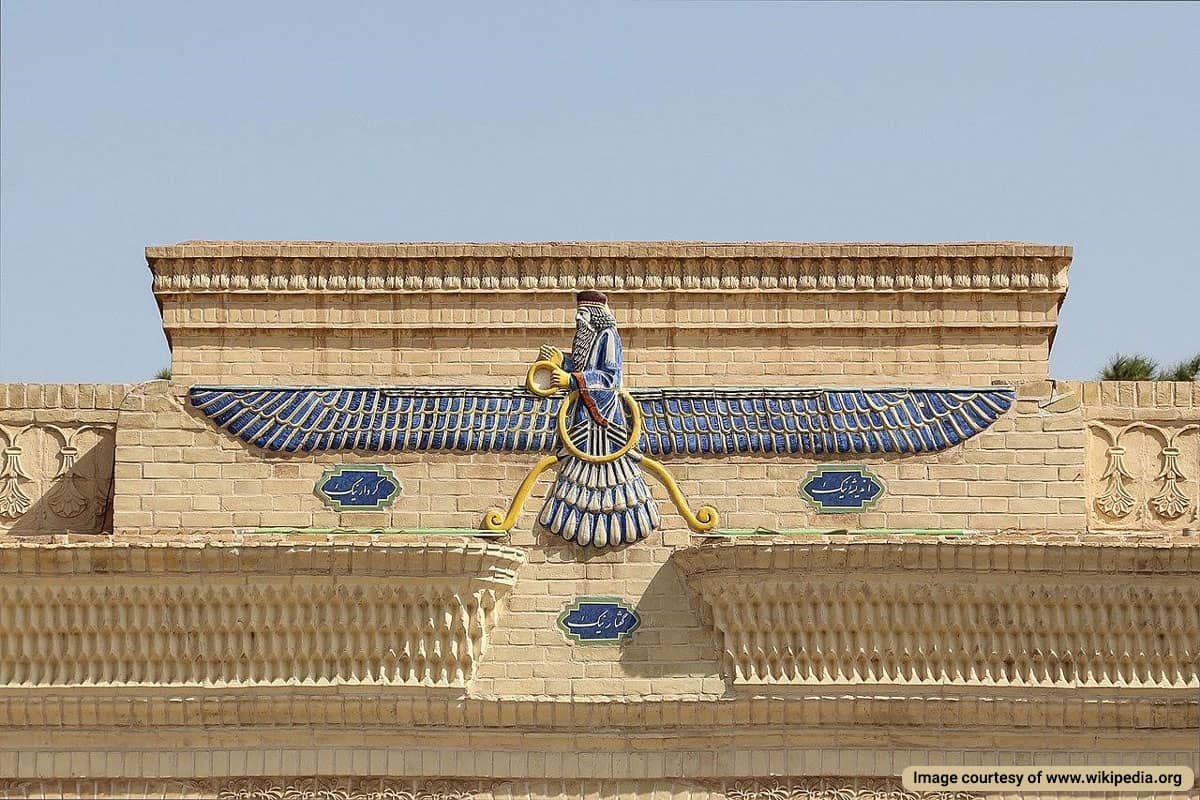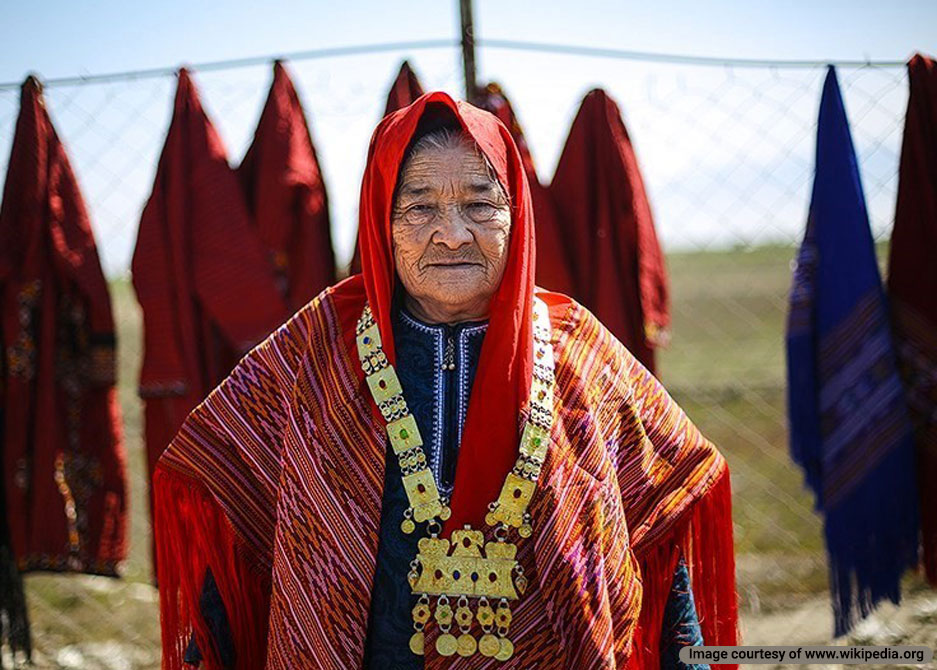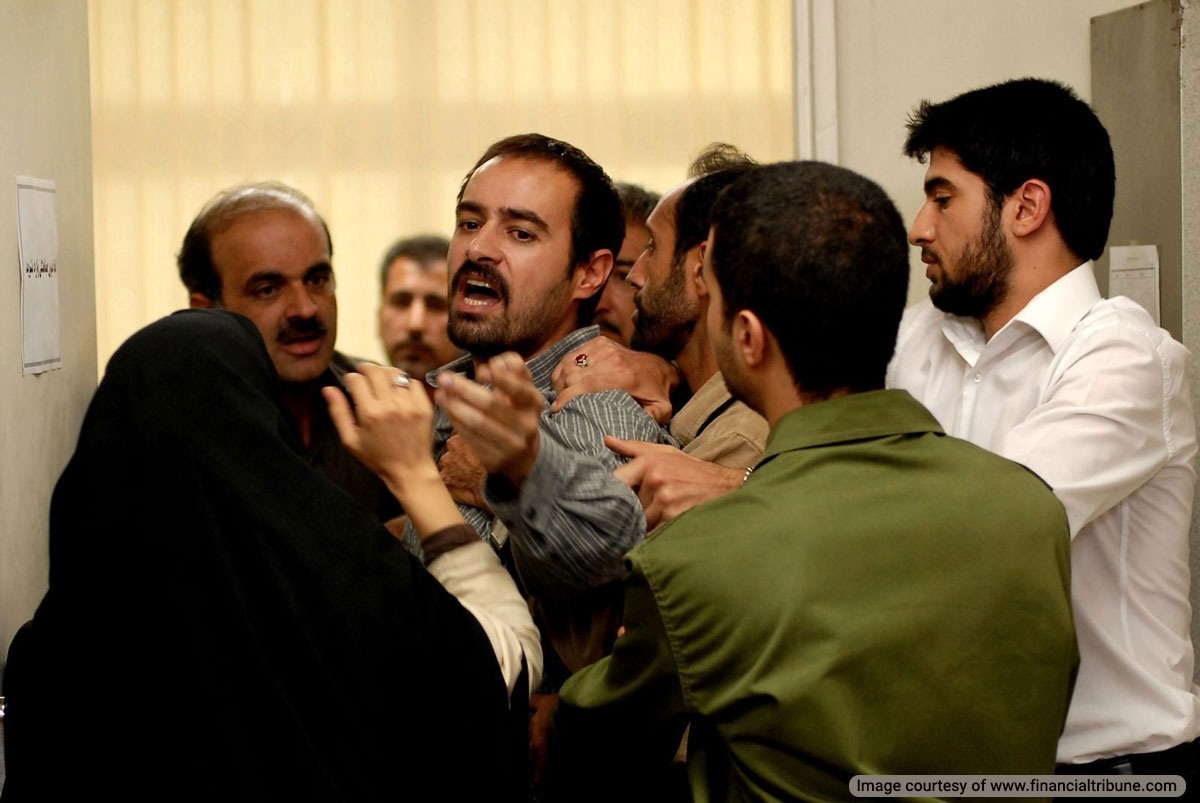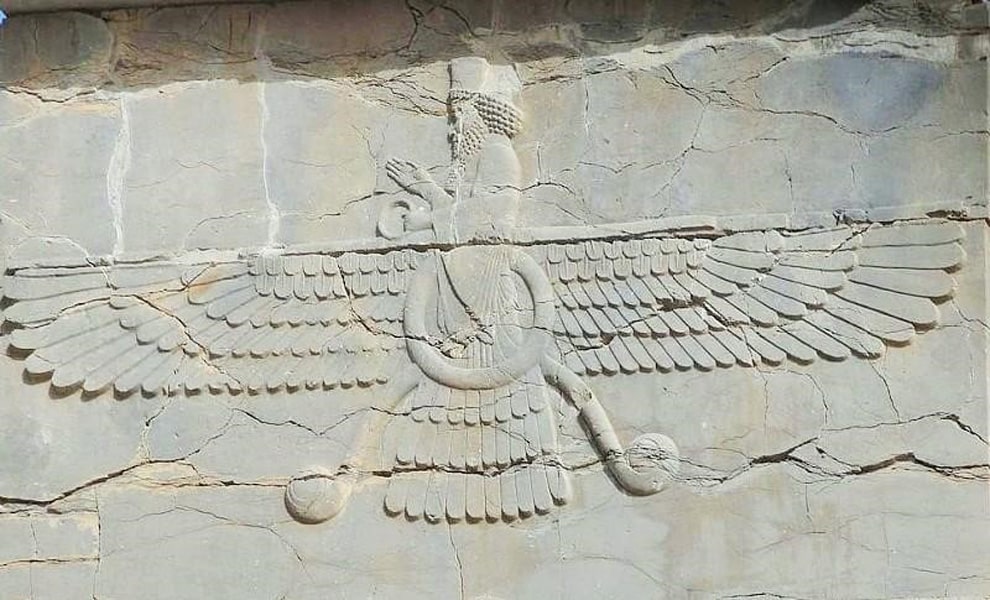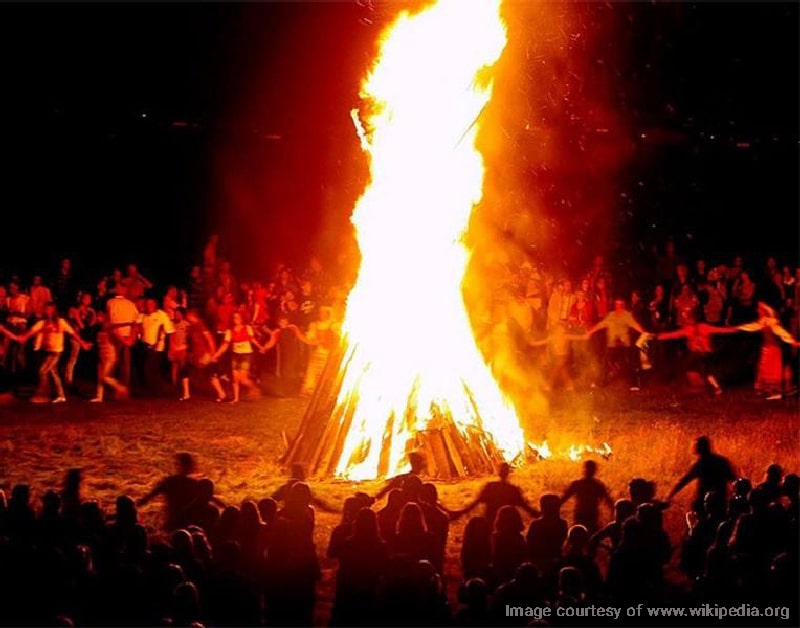
Chahrshanbe Suri is an ancient Zoroastrian celebration of jumping over fire in the last week of the solar year. This traditional Iranian festival takes place between Tuesday night and Wednesday, celebrating winter’s end. Chaharshanbe means Wednesday, and Suri means celebration. It is one of the long-standing Iranian traditions observed in neighboring countries of Afghanistan, Tajikistan, Iraq, Azerbaijan, and Turkey.
Chaharshanbe Suri Ancient Origins
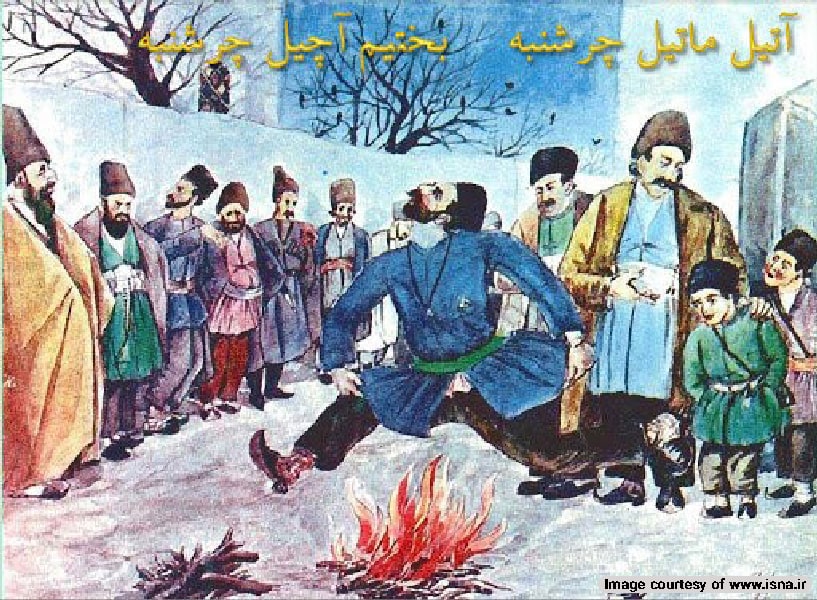
Chaharshanbe Suri is one of the feasts of the Hamaspathmaēdaya (Farvardigan), a five-day festival during the final days of each solar year. This festival honors the spirits of the dead and Amesha Spenta (The Seven Immortals, Zoroastrian divine entities). But the origins of this festival can be traced further back to the origins of Nowruz.
The Mesopotamian festival of the return of Dumuzi (Tammuz) celebrates the end of winter and the arrival of spring. Dumuzi is the deity of fertility, who would go to the underworld every year and return upon spring, bringing fertility to the land. His return festival was a significant Mesopotamian event, as it marked the start of the agricultural season.
The original feast of Hamasapathmaedaya was established after the calendar reform by Ardashir I in the second century CE. This festival started six days before the new year and also honored the creation of fire and humans by Ahura Mazda. During the Sassanid era, the festival was divided into two phases, with the first phase honoring the spirits of the innocent and children, and the second honoring all spirits.
Some sources report that Sassanid king Hormizd-Ardashir was the first monarch to establish the practice of building fires during Nowruz. He believed the fire would purify the air and dispel malevolent spirits. The fire ritual could also originate from the Zoroastrian Sadeh festival.
Chaharshanbe Suri After the Arrival of Islam
After the Arab invasion of Persia, the practice was limited to the last Wednesday of the year. In Arab culture, the previous Wednesday was considered an unlucky day. The practice of lighting fires was meant to avoid bad luck. According to many historians, this is the origin of the modern Chaharshanbe Suri rituals. During the Islamic era, this event was moved to the last Wednesday of the lunar month of Safar, instead of the Solar calendar.
Some sources attribute the origins of Chaharshanbe Suri to the rise of Mokhtar al-Thaqafi, or the uprising of Abu Muslim in Khorasan. There is also a report of a Samanid ritual of lighting large fires for an event called Shab-e Suri (night of celebration), but there are no details of the ritual.
At any rate, the Chaharshanbe Suri festival has prevailed in Iran for millennia and is still widely practiced across Iran and other neighboring countries. While its origins may be Zoroastrian, the occasion can be celebrated regardless of religious affiliation.
Chaharshanbe Suri Rituals in Iran
There are a variety of supplementary rituals associated with this festival that may vary based on region. The common feature in all Chaharshanbe Suri practices is lighting a fire.
Lighting a Fire
The main ritual of Chaharshanbe Suri is lighting a large bonfire. This is usually carried out in an open space. In the past, people would light fires on their roofs. After Mokhtar al-Saghafi was released from prison, he asked his followers to light fires on their rooftops as a show of support.
Iranians light three bonfires symbolizing the three Zoroastrian principles Humata, Huxta, and Huvarshta (Good Thoughts, Good Words, Good Deeds). Sometimes they light seven bonfires in honor of the seven Amesha Spenta (Zoroastrian deities).
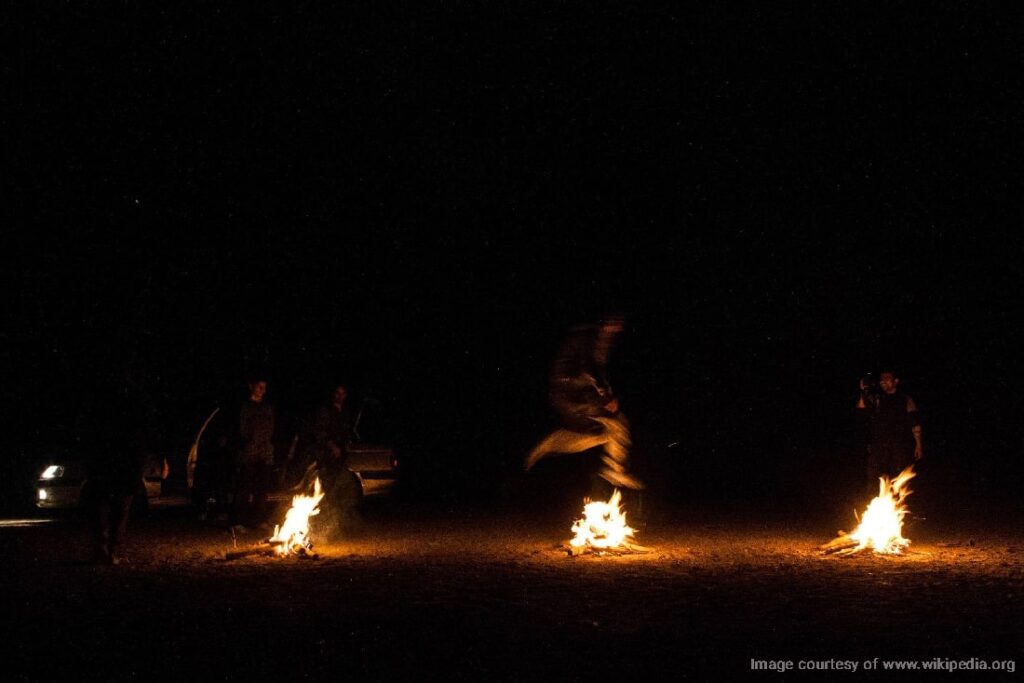
Jumping Over Fire
In this purification ritual, everyone will jump over the fire to leave behind bad luck and leave it to the fire. During the ritual, the jumper chants to the fire:
Zardi-ye Man Az To, Sorkhi-ye To Az Man
Take my yellowness, and I will have your redness
Yellowness is a symbol of bad health (such as the Jaundice disease), and the fire’s redness is a symbol of life and health. This ritual is meant to renew one’s health for the upcoming year.
The practice of jumping over the fire was established in the Islamic period. Jumping over fire is considered sacrilege in Zoroastrian beliefs. It is disrespectful towards fire, one of the four sacred elements.
Qashogh Zani (Spoon Banging)
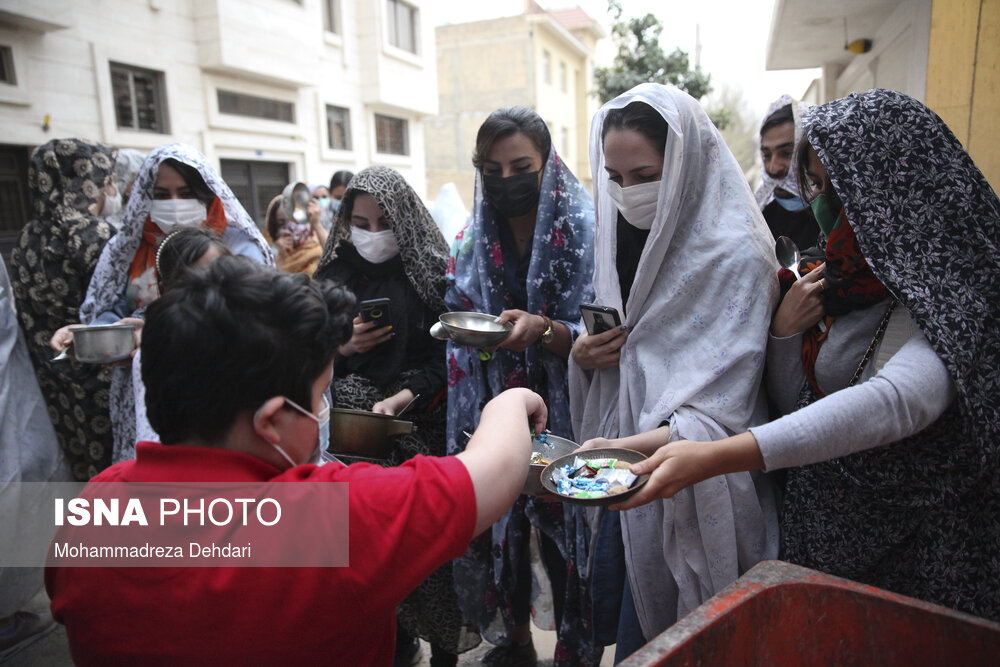
This ritual is one of the oldest practices of Chaharshanbe Suri. Unlike Halloween’s trick-or-treating ritual, people of all ages can participate in this ritual. Men and women wear disguises, usually a Chador (cloak) over their heads. This ritual symbolizes the return of spirits to the land of the living during spring.
Each person is supposed to visit seven houses but must remain anonymous. The Qaghoq-Zan (spoon banger) should not speak to the owners. They would take an empty bowl and a spoon, and bang the spoon over the bowl. The host would fill the bowl with legumes or sometimes money. This later ties in with another Chaharshanbe Suri ritual.
In the contemporary era, this ritual is rarely practiced in urban areas. Some villages still practice spoon banging in a different form. Young boys wear Chadors over their heads and go to houses and sing traditional songs.
Koozeh Shekani (Clay Urn Breaking)
Koozeh is an unglazed clay urn traditionally used in Iranian households to store water and other consumables. Because of their unglazed surface, they could not be cleaned properly. By the end of the year, the urns would be dirty. In traditional beliefs, urns collect bad luck and evil spirits.
On the last Wednesday night of the year, the household would drop their old vase from the roof or break it in some other manner. In some cities, people break the urns after jumping over the fire. In Khorasan, people place coal, salt, and a coin inside the urn, rotate it above each family member’s head and then break it.
Fal Giri (Fortune-Telling)
One of the social rituals of Chaharshanbe Suri is Fal Giri fortune-telling. One of the special fortune-telling rituals is Fal-e Boolooni. It is carried out using a Boolooni jar, a small jar used to store pickled goods and spices. Each person would place a note containing a poem and a specific item. Then a child would pick one note and an item. The poem would tell the fortune of the item’s owner.
Another traditional fortune-telling practice is Fal-e Goosh. In this ritual, young girls make a wish and hide behind a wall. They eavesdrop on stranger’s conversations and interpret their conversation as a response to their wish.
Shawl Andazi (Scarf Throwing)
This is another traditional Iranian ritual that is still practiced in some villages and towns in Hamadan and Zanjan. In this ritual, young people tie a few scarves or Shawls together and create a long rope. They slide this rope down the chimney from the rooftop or over the wall. They cough to announce their presence to the homeowner. The homeowner places a few gifts in the Shawl and ties the corner.
This item is both a present and a fortune-telling method. If the item is bread, it predicts prosperity. If it is sweets, it predicts happiness. Pomegranates are a sign of fertility, walnuts are a sign of longevity, while hazelnuts and almonds are a sign of persistence and patience. Raisins are a sign of adequate rainfall in the next year, silver coins are a sign of an upcoming marriage, and in some areas an indirect marriage proposal.
Bakht-Gosha (Untying Luck)
According to traditional beliefs, a girl who does not have any suitors has a tied luck. This ritual varies in different regions and includes a series of superstitious practices involving locks, knots, threads, walnuts, and other items. The goal is to untie the knotted fate of the unlucky girl and help her find a husband in the new year. This ritual is also part of the Sizdah Be Dar celebration where girls tie grass strands into knots to avert bad luck.
Chaharshanbe Suri Foods
Iranian families gather on the last Wednesday of each year and prepare several special dishes and food items. The foods are regionally specific and symbolize traditional beliefs.
Ajil-e Chaharshanbe Suri (Mixed Nuts)
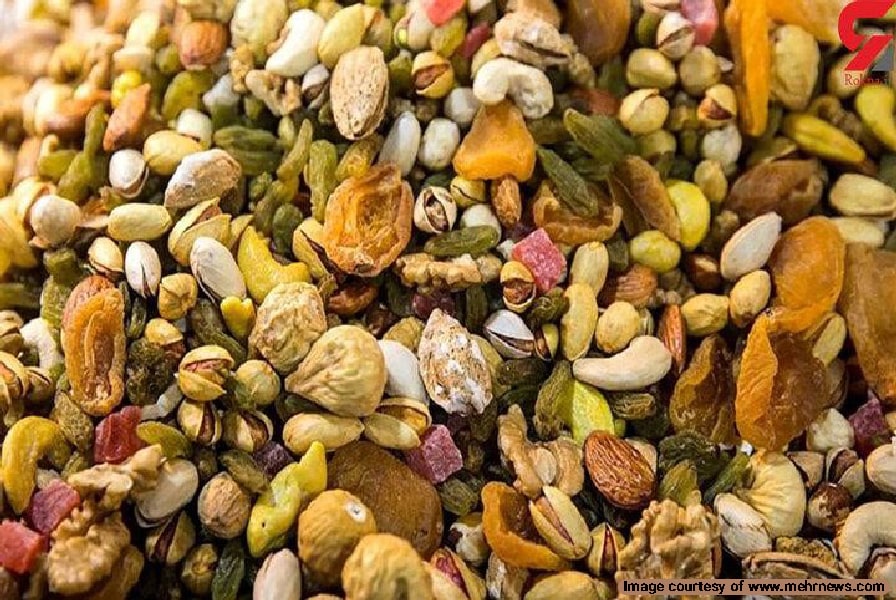
This is a collection of nuts and dried fruits. In some areas such as Khorasan, it is called Ajil-e Moshkel Gosha (literally meaning problem solver or wish-granting). It is a mix of unsalted nuts and dried mulberries or prunes that are supposed to bring good fortune.
Ash-e Abudurda (Ashe Shafa)
In some regions, people cook a special soup on this night using a mix of legumes (beans, lentils, and chickpeas) and a mix of vegetables and noodles. It is similar to Ashe Reshteh but with the addition of flour dough statues of Abudurda. The main function of this Ash is to heal the sick.
Modern Chaharshanbe Suri Practices
Iranians still hold this festival every year, but in modern times it involves lighting large fires in urban areas and using a series of fireworks. Most people light fires in their neighborhood, jump over fires, play music, and dance with their family and friends.
Sometimes, young people use illegal fireworks or improvised fireworks that are very dangerous and lead to unfortunate injuries and even deaths. This is why it is sometimes called Chaharshanbe Suzi (the burning Wednesday) in popular culture. The government strictly prohibits the sale and purchase of these goods, and emergency services are on high alert during Chaharshanbe Suri to prevent the spread of fires in urban areas.
Chaharshanbe Suri in Iranian Culture
Ferdowsi mentions this ancient Iranian tradition in Shahnameh in the battle of Bahram Choobineh and Parmoudeh. An astronomer warns Bahram to avoid Wednesday because of bad luck and lights a fire to dissipate malevolent spirits.
Another cultural significance of this tradition is tied to the legend of Siavash and his trial by fire. Zoroastrian priests believed in the power of fire, and its ability to separate good from evil. Siavash went through the fire to prove his innocence as part of his trial. Some believe this festival and the practice of jumping over the fire is in celebration of Siavash’s innocence.
Participate in the Chaharshanbe Suri Festival in Iran
Traditional Iranian festivals are an integral part of our intangible cultural heritage. By participating in this traditional ritual, you can learn more about Iranian culture and traditions. If you are traveling to Iran in the last days of the solar year (mid-March), you can join the Chaharshanbe Suri celebrations. But make sure to stay safe and avoid dangerous fireworks.
Frequently Asked Questions About Chaharshanbe Suri
If you have any other questions about the Chaharshanbe Suri celebration or other ancient Iranian festivals, let us know in the comments. We will respond as soon as possible.
What is Chaharshanbe Suri?
Chaharshanbe Suri is an ancient Persian festival celebrated on the eve of the last Wednesday before Nowruz, the Persian New Year. It symbolizes the coming of spring and involves various rituals, including jumping over fire.
What are the main traditions of Chaharshanbe Suri?
The main traditions include lighting bonfires, jumping over them while chanting phrases to symbolize the purification of the soul, and setting off fireworks. People also celebrate by decorating their homes and participating in communal gatherings.
What does jumping over fire symbolize?
Jumping over fire symbolizes the shedding of negativity, illness, and misfortune. The fire is seen as a purifying element, burning away the harmful influences from the past year and welcoming health and brightness in the new year.
What do people say when jumping over the fire?
When jumping over the fire, people often chant phrases like “Zardie man az to, sorkhi to az man,” which translates to “My paleness is yours, your redness is mine,” indicating the exchange of good health and fortune.
Are there any specific foods associated with Chaharshanbe Suri?
Yes, traditional foods include various snacks and sweets. Popular items are “Ash-e Chaharshanbe Suri,” a herb soup, and various types of nuts and dried fruits called Ajil-e Moshkel Gosha (wish-granting mixed nuts) that are shared among family and friends.
How is Chaharshanbe Suri celebrated in different regions?
While the core rituals remain the same, different regions may have unique customs. For instance, in some areas, people might create elaborate bonfires, while in others, firecrackers or local street fairs may be more common.
Is Chaharshanbe Suri celebrated only in Iran?
While it is most widely celebrated in Iran, variations of this festival can be found in other countries with Persian cultural influences, such as Afghanistan, Tajikistan, Iraq, Azerbaijan, and parts of Central Asia.
Are there any safety concerns during Chaharshanbe Suri?
Yes, safety is crucial. Participants should be cautious when jumping over fires and using fireworks to prevent injuries or accidents. It’s important to keep a safe distance and ensure that the fires are controlled.



